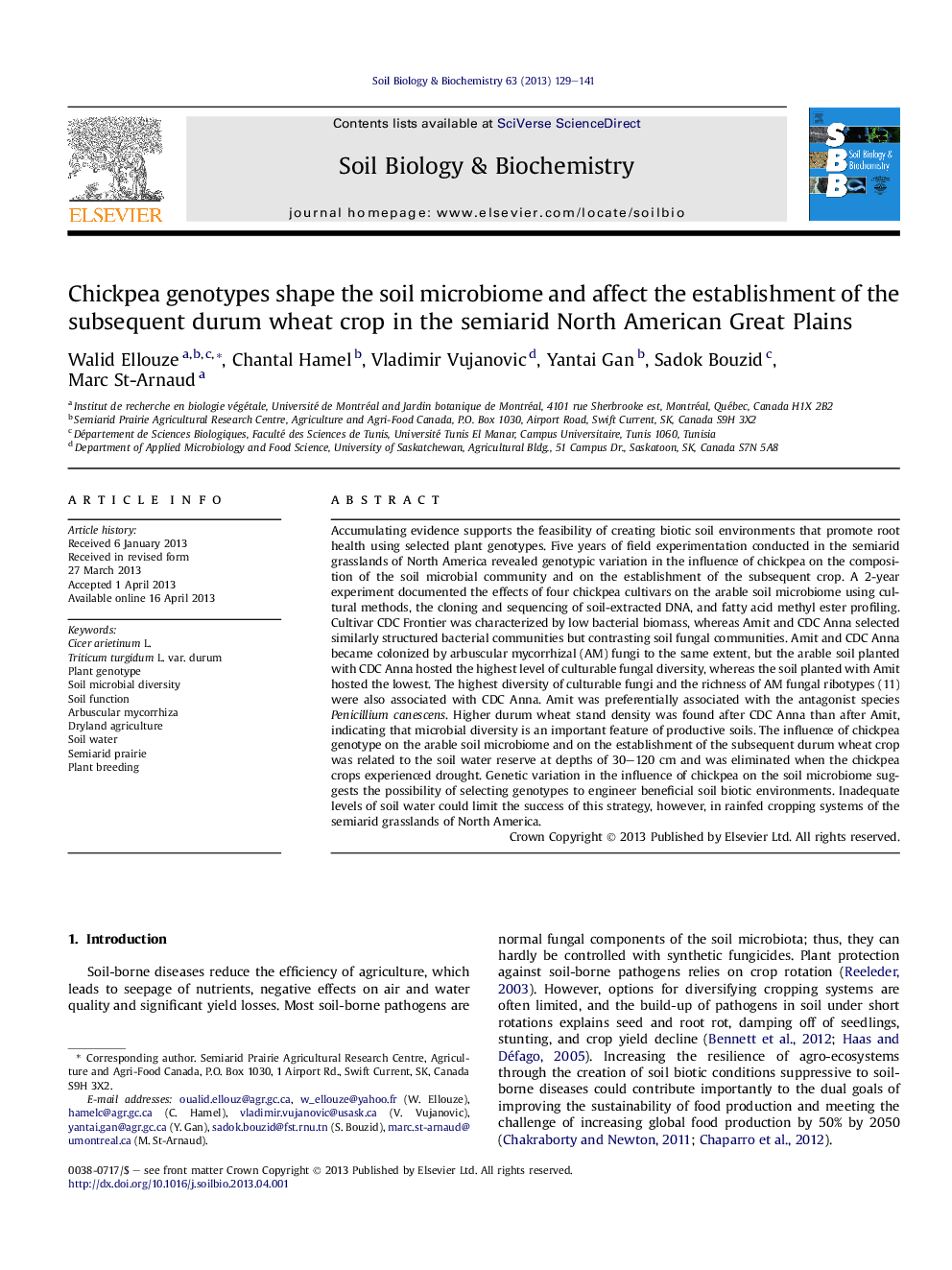| کد مقاله | کد نشریه | سال انتشار | مقاله انگلیسی | نسخه تمام متن |
|---|---|---|---|---|
| 2024816 | 1542621 | 2013 | 13 صفحه PDF | دانلود رایگان |

• Chickpea genotypes shape the soil microbiome in the North American semiarid prairie.
• Chickpea legacies differentially impact the establishment of a following wheat crop.
• High soil microbial diversity is healthier than abundance of antagonistic species.
• Soil profile water regulates the expression of chickpea influence on the microbiome.
Accumulating evidence supports the feasibility of creating biotic soil environments that promote root health using selected plant genotypes. Five years of field experimentation conducted in the semiarid grasslands of North America revealed genotypic variation in the influence of chickpea on the composition of the soil microbial community and on the establishment of the subsequent crop. A 2-year experiment documented the effects of four chickpea cultivars on the arable soil microbiome using cultural methods, the cloning and sequencing of soil-extracted DNA, and fatty acid methyl ester profiling. Cultivar CDC Frontier was characterized by low bacterial biomass, whereas Amit and CDC Anna selected similarly structured bacterial communities but contrasting soil fungal communities. Amit and CDC Anna became colonized by arbuscular mycorrhizal (AM) fungi to the same extent, but the arable soil planted with CDC Anna hosted the highest level of culturable fungal diversity, whereas the soil planted with Amit hosted the lowest. The highest diversity of culturable fungi and the richness of AM fungal ribotypes (11) were also associated with CDC Anna. Amit was preferentially associated with the antagonist species Penicillium canescens. Higher durum wheat stand density was found after CDC Anna than after Amit, indicating that microbial diversity is an important feature of productive soils. The influence of chickpea genotype on the arable soil microbiome and on the establishment of the subsequent durum wheat crop was related to the soil water reserve at depths of 30–120 cm and was eliminated when the chickpea crops experienced drought. Genetic variation in the influence of chickpea on the soil microbiome suggests the possibility of selecting genotypes to engineer beneficial soil biotic environments. Inadequate levels of soil water could limit the success of this strategy, however, in rainfed cropping systems of the semiarid grasslands of North America.
Journal: Soil Biology and Biochemistry - Volume 63, August 2013, Pages 129–141